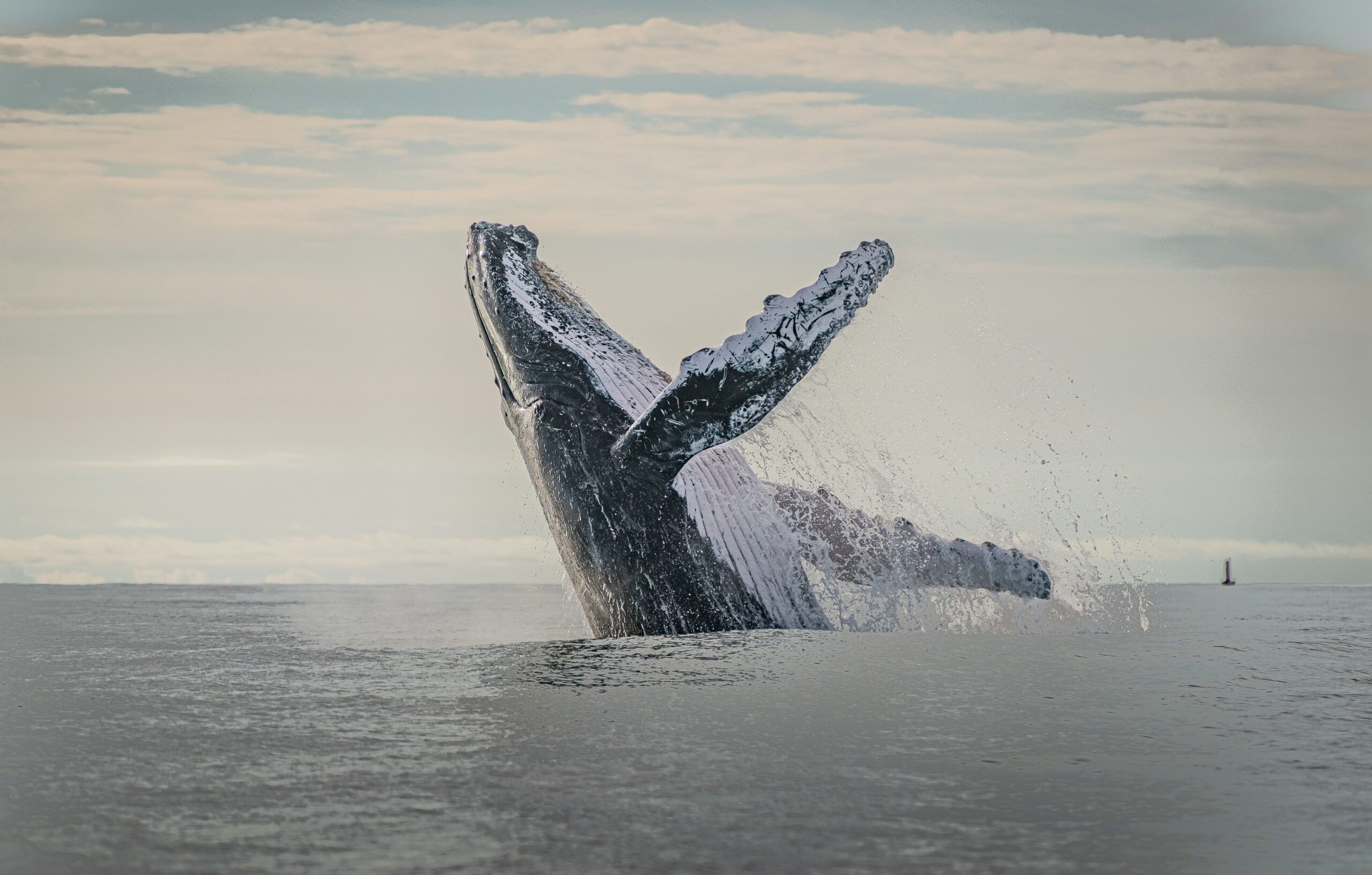Broad coalition announces support for conserving Eastern Tropical Pacific
June 28, 2022 – A broad coalition of philanthropic, government, and non-government organizations pledged technical and financial assistance totaling more than $150 million in private and public funds, to support Colombia, Costa Rica, Ecuador, and Panama in strengthening the Eastern Tropical Marine Corridor (CMAR) by creating a transboundary biosphere reserve that will connect and protect biological hotspots and encompass 500,000 square kilometers (193,000 square miles) of ocean – an area slightly larger than Spain.
The Connect to Protect Eastern Tropical Pacific Coalition, which includes the Bezos Earth Fund, GEF-supported Blue Nature Alliance, Development Bank of Latin America, Enduring Earth, German Ministry for Economic Development and Cooperation through KfW, Gordon and Betty Moore Foundation, Islas Secas Foundation, Minderoo Foundation, Pew Bertarelli Ocean Legacy, Re:wild, Shark Conservation Fund, UK government, US Department of State, and Wyss Foundation, will work alongside elected leaders, communities, Indigenous groups, government officials, and scientists to strengthen cooperative governance, design and implement marine protected areas and a biosphere reserve, and secure long-term sustainable financing.
The Green Climate Fund will also provide financial support and the coalition invites other governments, multilateral agencies, civil society organizations and partners to join us in this effort. And, the UK has already committed to supporting the countries and CMAR. This includes supporting the region with technical assistance through the UK’s Blue Planet Fund to identify actions to reinforce their monitoring, management, and enforcement of its marine protected areas.

Spanning from Costa Rica and Panama to the north and Colombia and Ecuador to the south, these rich Pacific waters harbor some the world’s most productive, biologically diverse, and ecologically significant marine environments. This vast, unique, irreplaceable, and interconnected ecosystem also plays a key role for populations of a wide range of sharks, whales, and sea turtles, and support billions of dollars annually in local economic activity.
Yet, typical of the global ocean, these thriving waters – and the communities that depend on them – face growing threats. Recognizing this risk, leaders from Colombia, Costa Rica, Ecuador, and Panama have moved forward together to act. Over the past year, each country pledged ambitious new marine protections. Together, these commitments cover some 324,000 square kilometers (125,000 square miles) of ocean, and include the thriving waters surrounding Cocos Island, Cordillera de Coiba, and the Galápagos. Additionally, each country has already committed to protecting at least 30% of their sovereign waters.
In November 2021, the presidents of Colombia, Costa Rica, Ecuador, and Panama also signed a joint memorandum of understanding to create the transboundary biosphere reserve that will connect and protect the marine environments of the Cocos, Coiba, Galápagos, Gorgona, and Malpelo Islands. Safeguarding the pathways between the region’s linked biological hot spots will protect the tuna, sharks, rays, whales, birds, sea turtles and many other creatures that rely on these corridors to feed, gather, reproduce, and give birth. In addition to the benefits to nature, the reserve will also support food security, and boost local economies.
The reserve will help safeguard the Eastern Tropical Marine Corridor (CMAR), which was formally established by the four countries nearly 20 years ago as part of a joint declaration that created a voluntary regional inter-governmental cooperation mechanism for the conservation and sustainable use of marine biodiversity across the waters of member nations. The agreement has successfully encouraged communication and collaboration on common regional threats such as overfishing.
For example, in 2020, in response to the presence of a large, foreign-flagged industrial fleet operating near the Galápagos, the four countries issued a joint statement raising concerns about the threats to biodiversity and called on the international community to strengthen monitoring and control of fishing activities. And the countries recently signed an agreement with the United States to work together to address common challenges, including illegal, unreported, and unregulated fishing, marine conservation financing, and the protection of marine biodiversity.
Quotes from members of the Connect to Protect Eastern Tropical Pacific Coalition and supporters:
Bezos Earth Fund: “Investing in ocean protection not only helps us reach our climate goals but has tremendous co-benefits for biodiversity and human well-being. Working together, we can reach the goal of protecting 30 percent of the planet’s land and sea by 2030. We must conserve what we still have, restore what’s been lost and join together to protect our shared planet,” said Cristián Samper, Bezos Earth Fund Principal Advisor for Nature.
Blue Nature Alliance: “Nature and millions of people depend on a thriving Eastern Tropical Pacific Ocean,” said Joaquín Quinto Labougle, Regional Program Officer for Latin America and the Caribbean for the Blue Nature Alliance. “Successfully sustaining the health and vitality of these waters requires global collaboration that includes the voices of local governments and Indigenous people as part of a broad partnership.”
Conservation International: “Colombia, Costa Rica, Ecuador, and Panama have been showing the world what ocean conservation leadership looks like. No one government or entity can protect this seascape that people everywhere, in one way or another, depend on for their well-being,” said Dr. M. Sanjayan, CEO of Conservation International, a core partner of the Blue Nature Alliance. “Conservation International, together with the Blue Nature Alliance, is excited to be part of this incredibly important coalition. This is exactly how we save the nature humanity depends on: through collective global action from countries, communities, and the public and philanthropic sectors.”
Green Climate Fund: “The Green Climate Fund (GCF) is committed to engage with countries to program resources in support of the Eastern Tropical Marine Corridor, and to improve the protection and resilience of oceans and the communities that depend on them,” said Darren Karjama, Partnerships and Outreach, Green Climate Fund. “GCF has already approved a $65.2 million investment into the Galapagos Protected Area aimed at rehabilitating the area’s ecosystems and promoting sustainable tourism practices.”
Pew Bertarelli Ocean Legacy: “No country alone can tackle the global ocean challenges of climate change, overfishing by foreign fleets and biodiversity collapse,” said Dona Bertarelli, Co-Chair of the Bertarelli Foundation and Patron for Nature for the International Union for Conservation of Nature. “Never before have four countries joined forces to collectively protect and sustainably manage their sovereign waters.”
Re:wild: “This coalition is setting an impressive example of how governments can come together with philanthropic foundations and NGOs to protect our oceans, which are critical to the overall health of our planet and all life on Earth,” said Patricia Leon, Re:wild’s Program Officer for the Eastern Tropical Pacific. “The Eastern Topical Pacific, in particular, is vital not only to the livelihood and well-being of local communities, but also to the diverse marine life that depends on—and supports—the ecosystem. We are looking forward to seeing the conservation impact of this effort on the region.”
